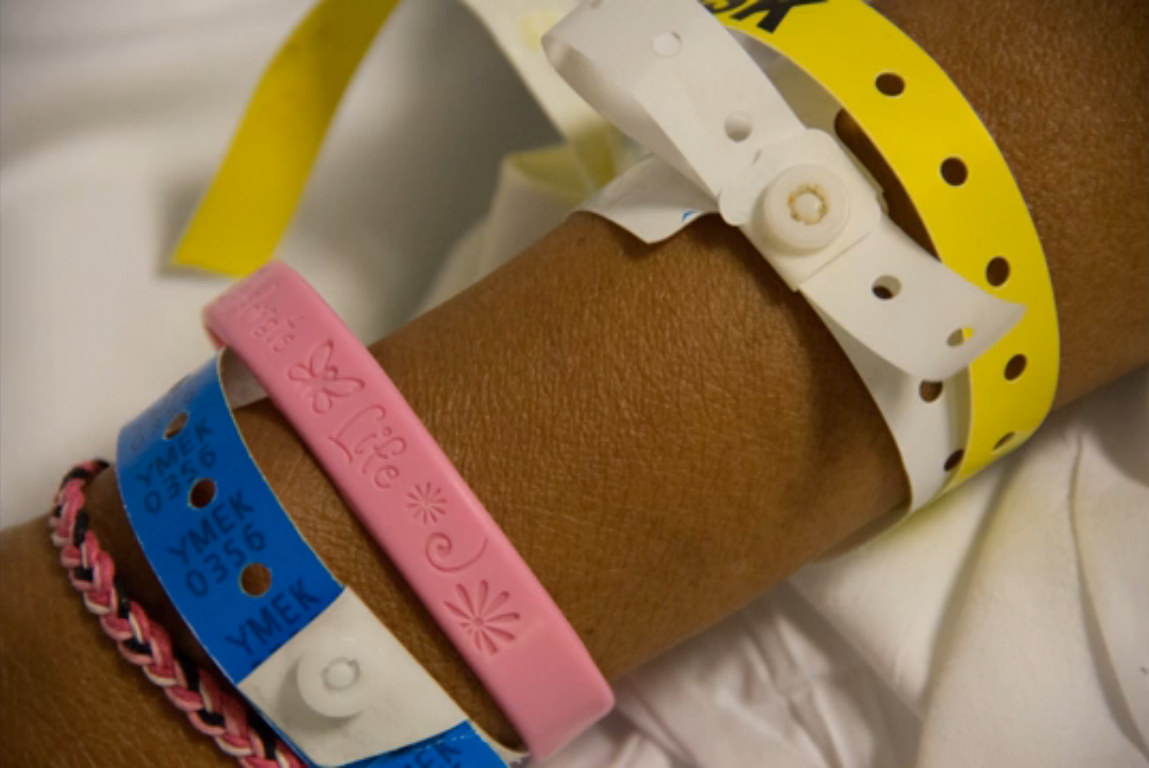By Ashley Yeager
This is the final post in a four-part, monthly series that gives readers recipes to try in their kitchens and learn a little chemistry and physics along the way. Read the first post here and the second one here and the third one here.

This bunny must have been made from quality chocolate. His ears are already gone. Credit: Waponi, Flickr.
When you snap off and savor the ears of a chocolate bunny this Sunday, say a quick thanks to science.
“The essence of science is to make good chocolate,” said Patrick Charbonneau, a professor of chemistry and physics at Duke.
He explained that cocoa butter, one of the main ingredients in chocolate, can harden into six different types of crystals. All six types are made of the same molecules. But, at the microscopic level, the types have distinct molecular arrangements, which lead to differences in the crystals that form.
“The problem with chocolate is that only two of these types have good texture when eaten,” Charbonneau told students in the Chemistry and Physics of Cooking.
He teaches the freshman seminar with chef Justine de Valicourt and chemistry graduate students Mary Jane Simpson and Keely Glass.
During class, students looked at and tasted chocolate containing only the good-tasting crystal types and some that also contained the less favorable ones. The first had that signature sheen and snap of quality chocolate and melted evenly when left on the tongue. The latter pieces were dull, melted with the slightest touch and left a sandy texture on the tongue.
The demonstration showed that the different types of chocolate crystals melt at different temperatures. By carefully controlling the chocolate as it cools, chocolate-makers can create mixtures of only the favorable crystal types.
The process, called tempering, takes chocolate through a series of heating and cooling steps. The initial cooling step forms many of the chocolate crystal types, including the dull, unfavorable ones. Warming the mixture a little — to about 31°C (87°F) — melts the unfavorable crystals but not the best-tasting ones.
As the mixture cools again, the remaining, favorable crystals “seed” the chocolate so that good-tasting crystals form preferentially throughout, ensuring good chocolate structure and taste.
Students got a chance to test the science in lab later that evening, and judging by the number of mouths (and faces) covered with chocolate, it’s safe to say the science was successful.
If you’re looking to try it out — or save a poor bunny’s ears — here’s the recipe.
Tempering chocolate:
Materials:
1 small, microwave safe bowl
1 big bowl
1 spatula
2 scraper spatulas
1 chocolate mold
parchment paper
cooking thermometer
Ingredients:
250 g Dark Chocolate or 250 g Milk Chocolate (about 1 1/3 cups)
Filling:
60g white chocolate (about 1/4 cup)
60g yogurt (a little less than 1/4 cup)
Instructions:
1. Place milk or dark chocolate in the small bowl.
2. Heat the bowl in 30-second intervals in a microwave (stirring after each) until the chocolate is melted. Note: The milk chocolate should take about 1.5 minutes and the dark chocolate about 2 minutes to melt.
3. Once heated, pour half the liquid chocolate onto a clean marble or stone counter. The chocolate puddle should be the size of a medium pancake. (Note: If there is not stone or marble surface, another technique is to melt less chocolate and then add good tempered chocolate in it to lower the temperature.)
4. Spread the pancake portion out in ribbons using the scraper spatula. Bring the chocolate back together into a mound repeatedly for 5 minutes, until it starts to solidify.
5. Put the chocolate back in the original heating bowl. Adding the cooler chocolate will cool the rest of the liquid to the right temperature.
6. Mix the cold and hot chocolate.
7. Check the temperature of the chocolate. (Dark: 31-32°C/88-89.5°F; Milk: 29-30°C/84-86°F).
8. Dip the parchment paper in the mixture of the “hot” and “cold” chocolate. If it cools on the parchment paper and is uniform and shiny, then it’s ready.
9. Pour chocolate into mold.
10. To make stuffed chocolate candies, flip the mold to empty excess chocolate.
11. Turn it back, scrap the excess of chocolate off the surface. Let the thin layer of chocolate in the mold crystallize.
11. Melt white chocolate. Mix it with yogurt. Cool to room temperature.
12. Add filling to 2/3 of the mold cavities, and then pour more tempered chocolate on top.
13. Level the chocolate with a scraper and scrape off excess.
14. Let it rest for few minutes at 20°C (68°F) or put it in the fridge.
15. Pop candies from mold and enjoy.
















